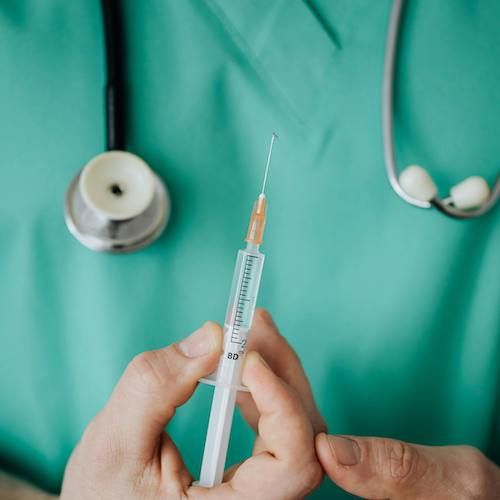News
Article
FDA Approves Bimekizumab for Adults with Plaque Psoriasis
Author(s):
The approval for the IL-17A and IL-17F inhibitor is supported by data showing about 80% of patients achieved nearly clear skin within 4 doses.

The US Food and Drug Administration (FDA) has approved bimekizumab (BIMZELX) for the treatment of moderate-to-severe plaque psoriasis in adult patients eligible for systemic or phototherapy.1
The new indication granted to UCB provides another novel inflammation pathway-targeting biologic to the psoriasis treatment armamentarium; bimekizumab is the first dual inhibitor of interleukin 17A and 17F (IL-17A; IL-17F) to be approved for this patient population.
Bimekizumab’s FDA approval was supported by findings from the phase 3 BE READY, BE VIVID and BE SURE trials—a trio of multicenter, randomized, placebo and/or active compactor-controlled studies assessing the efficacy and safety of the biologic across a total patient population of 1480 adults with psoriasis.
Across the 3 trials, investigators reported that a 320 mg dose of bimekizumab administered every 4 weeks was associated with more than 80% of treated patients achieving clear or almost clear skin per Psoriasis Area Severity Index scores of ≥90% (PASI 90), and Investigators Global Assessment (IGA) scores of 0 or 1, by week 16. Even better, approximately 60% of the phase 3 program patients achieved PASI 100 with the bimekizumab regimen by week 16.
Investigators additionally observed a “rapid” response with bimekizumab; more than 70% of treated patients achieved PASI 75 at week 4 after a single dose of the biologic. What’s more, long-term data showed a maintained clinical response in a “vast majority” of patients through 3 years of treatment.
Across the 3 pivotal trials, the most common adverse events to occur in ≥1% of patients included upper respiratory infections; oral candidiasis; headache; local injection reactions; tinea infections; gastroenteritis; Herpes Simplex infections; acne; folliculitis; Candida infections; and fatigue.
UCB additionally noted a non-causal, potentially increased risk of suicidal ideation and behavior with bimekizumab, and recommended prescribers weigh potential risks and benefits of the biologic especially in patients with a history of said behavior or severe depression. Bimekizumab was also associated with increased risk of infections; patients with active tuberculosis should not be prescribed bimekizumab.
The approval for bimekizumab on Wednesday comes almost exactly 1 month after UCB announced an anticipated delay on decision from the FDA following an Establishment Inspection Report (EIR) regarding a pre-license inspection conducted at the company’s Belgium manufacturing facility in April this year.2
Globally, bimekizumab holds marketing approvals for psoriatic diseases beyond psoriasis including psoriatic arthritis, non-radiographic axial spondyloarthritis, active ankylosing spondylitis, and psoriatic erythroderma.
In an interview with HCPLive during the Fall Clinical Dermatology 2022 Annual Meeting, April W. Armstrong, MD, MPH, associate dean of clinical research and professor of dermatology at Keck School of Medicine at USC, described the observed efficacy levels of bimekizumab in psoriasis as “quite unparalleled.”3
“And this is something, I think, very exciting about this new medication,” Armstrong said. “It also has shown to have a deep response in psoriatic arthritis as well, both clinically as well as radiographically.”
In a statement accompanying the approval, phase 3 investigator Mark Lebwohl, MD, dean for clinical therapeutics at Icahn School of Medicine at Mount Sinai, expressed excitement for the latest addition to the psoriasis biologic drug class.1
“We have been eagerly awaiting bimekizumab, the first IL-17A and IL-17F inhibitor, to be approved in the US for the treatment of adults with moderate-to-severe plaque psoriasis,” Lebwohl said. “In phase 3/3b trials, bimekizumab achieved superior levels of skin clearance at week 16 compared to placebo and three existing biologics for psoriasis, with responses being rapid and lasting up to a year. Long-term data have also shown that the majority of patients maintained high levels of clinical response through 3 years.”
References
- UCB. BIMZELX® Approved by the U.S. FDA for the Treatment of Adults with Moderate-to-Severe Plaque Psoriasis. Press release. Published October 18, 2023. https://www.ucb-usa.com/stories-media/UCB-U-S-News/detail/article/bimzelx-approved-by-the-us-fda-for-the-treatment-of-adults-with-moderate-to-severe-plaque-psoriasis
- Kunzmann K. UCB Anticipates Delay to FDA Bimekizumab Decision. HCPLive. Published September 19, 2023. https://www.hcplive.com/view/ucb-anticipates-delay-fda-bimekizumab-decision
- Smith T. April W. Armstrong, MD, MPH: Deucravacitinib, Bimekizumab, and Upadacitinib for Psoriasis. HCPLive. Published January 11, 2023. https://www.hcplive.com/view/april-armstrong-md-deucravacitinib-bimekizumab-upadacitinib-for-psoriasis

Study Compares ChatGPT-4 Diagnostic Abilities to Teledermatologists




